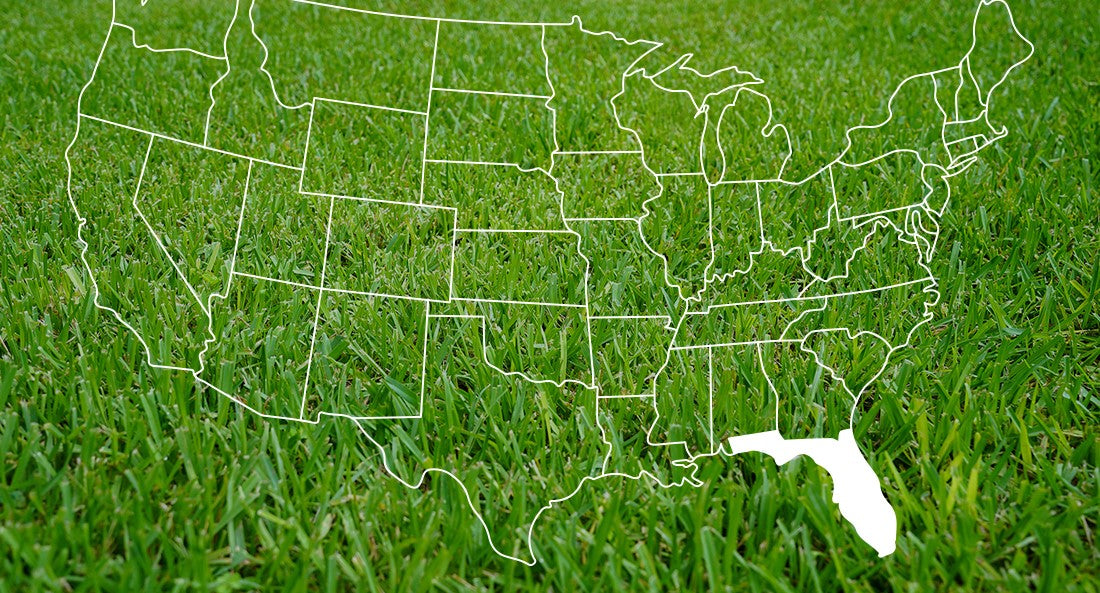If you're a Florida homeowner who's interested in establishing a lush green lawn that can withstand the unique climate and conditions of the Sunshine State, then St. Augustinegrass may be just what you need. With its drought tolerance, deep root system, and adaptability to many soil types, this species is one of the most popular warm-season grasses for establishing beautiful yards in Florida. But when should you plant it? Read on as we discuss when—and how—to lay down your St. Augustinegrass so it can reach its full potential!
St. Augustinegrass can be planted essentially year-round in the warmest regions of Florida. When planning to establish, make sure to avoid temperature extremes on both ends of the spectrum. This means planting well before any potential frost in the fall and winter and, if possible, avoiding the hottest, driest months. Because of the climate, the best times to establish St. Augustinegrass in southern Florida are late-fall through the winter into early spring. Spring and early summer are best in more northern areas.
Establishment of St. Augustinegrass is achieved through vegetative propagation rather than by seed. Methods include sodding, plugging, or sprigging. So what exactly are these methods, and how are they achieved?

Sodding
If you’re looking for an instant lawn, then this is the method for you. It will be the most expensive method of establishment, but time is money. Another big advantage of sodding is that you reduce the amount of bare ground left exposed for weed seed competition. Make sure to stagger the ends of your pieces of sod when they are laid and tamp the sod down to ensure good contact with the soil. Don’t play on or mow your sod until the roots have had a chance to grow into the soil.
Sprigging
A sprig is a piece of a stolon that contains a node. Nodes are regions of actively dividing cells that can form into shoots and roots. Sprigs can be planted into furrows and then covered with soil, making sure to leave a small portion of the leaf blades exposed to the sun. Once planted, sprigs should be tamped and watered thoroughly. Make sure to keep sprigs moist until you can see that the plants have filled in considerably.

Plugging
Plugs of St. Augustinegrass can be purchased or created from sod by cutting the sod into small pieces around 3” in diameter. How far apart you plant the plugs depends on how long you’re willing to wait for the yard to fill in. Plug spacing is typically from around 6 to 24 inches. Intuitively, selecting a closer spacing results in faster ground coverage and less pressure for weed encroachment. You can create holes in which to place your plugs or place them into open furrows. Tamp them down and give them a good soaking, and planting is complete. This sounds like a lot less work than it actually is.

According to the University of Florida Extension, “a newly planted lawn should not be fertilized until 30–60 days after planting. Because the root system is not developed on new plantings, fertilizing before this can result in nutrient leaching or runoff and potential pollution of ground or surface waters. Sod is generally fertilized prior to harvest and does not need supplemental nutrients for this time, so the delay in fertilizing will not affect turf health or establishment. The lawn should not be mowed until the roots have had a chance to peg down into the soil, generally 14-21 days after planting. Pegging means that the sod cannot be lifted without appreciable force.”
Keeping your newly planted St. Augustinegrass well-watered for the first few weeks of establishment is critical. Think of a lot of short irrigation cycles throughout the day. As the turf matures, you can slowly increase the irrigation run times and the time between irrigation cycles until you’re watering once every 2-3 days.

Planting St. Augustinegrass in Florida can be a great way to take advantage of the hot and humid climate that is usually experienced in the state. With proper care and maintenance, it can provide a lush landscape for many years to come. The best time to plant this grass is between April and June, preferably from mid-April to mid-May. In addition, make sure to water your new lawn regularly and use a fertilizer for additional nourishment after it has become established. Overall, with the right preparation and guidance, planting St. Augustinegrass in Florida can be relatively simple and successful. So what are you waiting for? Now is the perfect time! Happy establishment!









